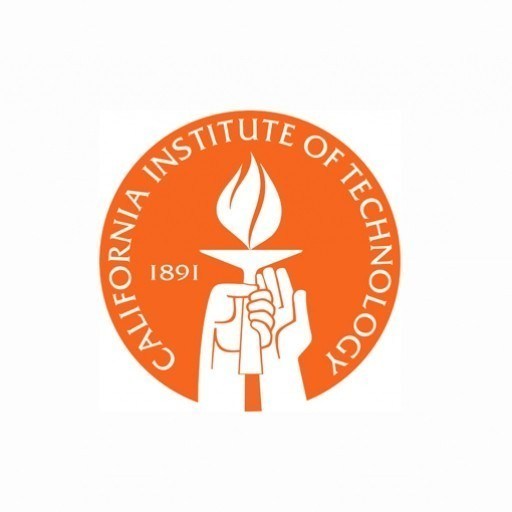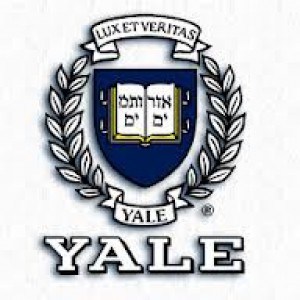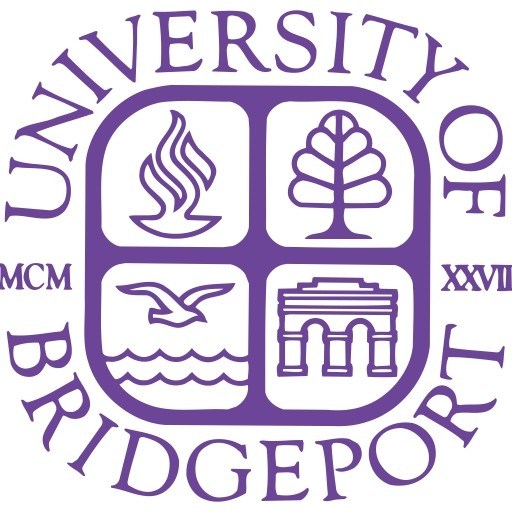Photos of university / #caltechedu
The objective of the undergraduate program in Electrical Engineering at Caltech is to produce graduates who will attain careers and higher education that ultimately lead to leadership roles in academia, industry and government in areas of rapidly advancing interdisciplinary technology related to telecommunications, solid-state, information, computer and electrical systems.
The program prepares its students for either graduate study, entrepreneurial careers, or research and development work in government or industrial laboratories. It inspires them to undertake careers and professional practices that provide an opportunity to address the pressing technological needs of society. It accomplishes this by building on the core curriculum to provide a broad and rigorous exposure to the fundamentals (e.g., math, science, and principles of engineering) of electrical engineering. EE’s other program objectives are multiple. The program strives to maintain a balance between classroom lectures and laboratory and design experience, and it emphasizes the problem formulation, system-design, and solving skills that are essential to any engineering discipline. The program also strives to develop in each student self-reliance, creativity,teamwork ability, professional ethics, communication skills, and an appreciation of the importance of contemporary issues and lifelong intellectual growth. For interested students, there are opportunities to conduct research with a faculty member.
Students electing this option will normally choose to take APh/EE 9 ab as a freshman-year elective and the introductory seminar EE 1. The formal study of electrical engineering begins in the sophomore year with circuits and systems, EE 44; digital electronics, EE/CS 51, 52; semiconductor sensors and actuators, EE 40; the theory and laboratory practice of analog circuits, EE 45; and then a course on feedback control systems, EE 113 or CDS 110 a. The junior year features the fundamentals of signals and systems and digital signal processing, EE 111; probability and random processes, ACM/EE 116; an introduction to analog and digital communications, EE 160; electromagnetic engineering, EE 151; and an analog electronics laboratory, EE 90. In the senior year, the student will be asked to demonstrate his or her ability to formulate and carry out a design project through independent research or either a senior thesis, EE 80 abc, or two courses selected from the senior project design laboratory, EE 91 ab, EE/CS 53, and CS/EE/ME 75 c. In addition, the student, especially in the senior year, will have a significant opportunity to take elective courses that will allow him/her to explore earlier topics in depth, or to investigate topics that have not been covered previously.
A student whose interests lie in the electrical sciences but who wishes to pursue a broader course of studies than that allowed by the requirements of the electrical engineering option may elect the engineering and applied science option.
Attention is called to the fact that any student who has a gradepoint average less than 1.9 at the end of the academic year in the subjects listed under electrical engineering may be refused permission to continue work in this option.
| Units Per Term | ||||
| Second Year - Schedule 1 | 1st | 2nd | 3rd | |
|---|---|---|---|---|
| Ph 2 abc | Sophomore Physics | 9 | 9 | 9 |
| Ma 2, Ma 3 | Sophomore Mathematics | 9 | 9 | - |
| HSS Electives1 | 9 | 9 | 9 | |
| EE 40 | Introduction to Semiconductors and Sensors | - | - | 9 |
| EE 44 | Circuits and Systems | 9 | - | - |
| EE 45 | Electronics Laboratory | - | 12 | - |
| EE 113 | Feedback and Control Systems | - | - | 12 |
| EE/CS 51 | Principles of Microprocessor Systems | 12 | - | - |
| EE/CS 52 | Microprocessor Systems Laboratory | - | 12 | - |
| Electives | - | - | 9 | |
| 48 | 51 | 48 | ||
| Units Per Term | ||||
| Second Year - Schedule 2 | 1st | 2nd | 3rd | |
|---|---|---|---|---|
| Ph 2 abc | Sophomore Physics | 9 | 9 | 9 |
| Ma 2, Ma 3 | Sophomore Mathematics | 9 | 9 | - |
| HSS Electives | 9 | 9 | 9 | |
| EE 40 | Introduction to Semiconductors and Sensors | - | - | 9 |
| EE 44 | Circuits and Systems | 9 | - | - |
| EE 45 | Electronics Laboratory | - | 12 | - |
| EE 113 | Feedback and Control Circuits | - | - | 12 |
| ACM 95 ab | Intro. Methods of Applied Math | 12 | 12 | - |
| Electives | - | - | 9 | |
| 48 | 51 | 48 | ||
| Units Per Term | ||||
| Third Year - Schedule 1 | 1st | 2nd | 3rd | |
|---|---|---|---|---|
| E 10 | Technical Seminar Presentations | 3 | - | - |
| EE 11 | Written Technical Communication | - | 3 | - |
| ACM 95 ab | Intro. Methods of Applied Math. | 12 | 12 | - |
| HSS Electives1 | 9 | 9 | 9 | |
| ACM/EE 116 | Intro. to Stochastic Processes | 9 | - | - |
| EE 151 | Electromagnetic Engineering | - | - | 9 |
| EE 111 | Signals, Systems, and Transforms | 9 | - | - |
| EE 90 | Analog Electronics Project Lab | - | - | 9 |
| EE 160 | Communication-System Fundamentals | - | 9 | - |
| Electives | - | 9 | 18 | |
| 42 | 42 | 45 | ||
| Units Per Term | ||||
| Third Year - Schedule 2 | 1st | 2nd | 3rd | |
|---|---|---|---|---|
| E 10 | Technical Seminar Presentation | 3 | - | - |
| E 11 | Written Technical Communication | - | 3 | - |
| EE/CS 51 | Principles of Microprocessor Systems | 12 | - | - |
| EE/CS 52 | Microprocessor Systems Laboratory | - | 12 | - |
| HSS electives | 9 | 9 | 9 | |
| ACM/EE 116 | Intro. to Stochastic Processes | 9 | - | - |
| EE 151 | Electromagnetic Engineering | - | - | 9 |
| EE 111 | Signals, Systems, and Transforms | 9 | - | - |
| EE 90 | Analog Electronics Project Lab | - | - | 9 |
| EE 160 | Communication-System Fundamentals | - | 9 | - |
| Electives | - | 9 | 18 | |
| 42 | 42 | 45 | ||
| Units Per Term | ||||
| Fourth Year (for project) | 1st | 2nd | 3rd | |
|---|---|---|---|---|
| HSS Electives1 | 9 | 9 | 9 | |
| EE 91 ab2 | Experimental Projects in Electronic Circuits | 12 | - | - |
| EE Electives | 9 | 9 | 9 | |
| Electives | 9 | 18 | 18 | |
| 39 | 36 | 36 | ||
| Fourth Year (for thesis) | 1st | 2nd | 3rd | |
| HSS Electives1 | 9 | 9 | 9 | |
| EE 91 ab2 | Experimental Projects in Electronic Circuits | 12 | - | - |
| EE 80 | Senior Thesis | 9 | 9 | 9 |
| EE Electives | 9 | 9 | 9 | |
| Electives | 3 | 9 | 9 | |
| 42 | 36 | 36 | ||
1 See Institute requirements for specific rules regarding humanities and social sciences.
2 See option requirements 4 and 5.
Suggested Electives
First-year students interested in electrical engineering should take APh/EE 9 ab, which is an EE option requirement (though it need not be taken freshman year). Suggested elective courses for the second, third, and fourth year for various specializations within electrical engineering are given below. Students interested in other areas of specialization or interdisciplinary areas are encouraged to develop their own elective program in consultation with their faculty adviser.
Bioengineering
Second Year: Bi 9, Bi 10, APh 17 abc.
Third and Fourth Year: Bi/Ch 110, Bi/Ch 113, BE 141, EE/BE/MedE 166, EE/BE/MedE 185, CNS/Bi/EE/CS/NB 186, CNS/CS/EE 188, BE/EE/MedE 189 ab.
Communications and Signal Processing
Second Year: Selected from APh 17 abc, APh 23, APh 24, EE/CS 53.
Third and Fourth Year: EE 112, EE/Ma 126 ab, 127 ab, EE 128 ab, 161, 163 ab, 164, 167, EE/APh 131, APh/EE 130, 132, Ma 112 a.
Control
Second Year: APh 17 abc.
Third and Fourth Year: CDS 110 ab, and selections from EE 112, EE 128 ab, EE 164.
Electronic Circuits
Second Year: EE 113, CDS 101, APh/EE 183.
Third and Fourth Year: EE/MedE 114 ab, 124, EE 125, 153, 119 ab, CS/EE 181 abc, and selections from EE 112, CS 185 abc, EE/APh 180, EE 119, EE 160, EE 128 ab.
Microwave and Radio Engineering
Second Year: APh 23, APh 24, APh 17 abc.
Third and Fourth Year: EE 153, EE/Ae 157 ab, EE/MedE 114 ab, EE/APh 131, APh/EE 130, 132, APh/EE 183.
Optoelectronics
Second Year: APh 23, APh 24, APh 17 abc.
Third and Fourth Year: APh/EE 130, 132, APh 105 abc, APh 114 abc, APh/EE 183, APh 190 abc, EE/APh 131, EE 153.
Solid-State Electronics and Devices
Second Year: APh 17 abc.
Third and Fourth Year: APh/EE 183, and selections from APh 105 abc, APh 114 ab, EE 153, EE/BE 185, EE/MedE 187
Requirements
- Common Application or the Coalition Application with Caltech Questions - Caltech does not have a preference between the Common Application or the Coalition Application. We advise that you use the best platform for your application process.
- Note: Caltech is also a QuestBridge Partner. Students may apply for Caltech through the QuestBridge College Match Program.
- $75 application fee or fee waiver (Common App waiver, Coalition Application waiver, or Caltech-specific waiver)
- SAT with Optional Essay or ACT with Writing (official scores from testing agency)
- SAT Subject Test in Mathematics Level 2 (official scores from testing agency)
- 1 SAT science subject test: biology (ecological), biology (molecular), chemistry, or physics (official scores from testing agency)
- 1 math or science teacher evaluation
- 1 humanities or social sciences teacher evaluation
- Secondary School Report
- Academic transcripts
- TOEFL scores - Required of all international citizens unless 1) your native language is English; or 2) you have had school instruction for two or more years in English. The two years of school instruction must be completed prior to the application deadline). We do not accept the IELTS or any other substitute for the TOEFL requirement.
- International Financial Aid Statement of Intent - When an international citizen applies for freshman admission, the application prompts questions to confirm his/her understanding of our financial aid policy and thus confirm his/her financial aid intent towards Caltech. Caltech is need-sensitive for international citizens because the total amount of financial aid funds is limited for these students, and we remain committed to meeting the demonstrated need of all admitted students.
Want to improve your English level for admission?
Prepare for the program requirements with English Online by the British Council.
- ✔️ Flexible study schedule
- ✔️ Experienced teachers
- ✔️ Certificate upon completion
📘 Recommended for students with an IELTS level of 6.0 or below.
Scholarships
- Need-based scholarships
- Caltech Scholarships



